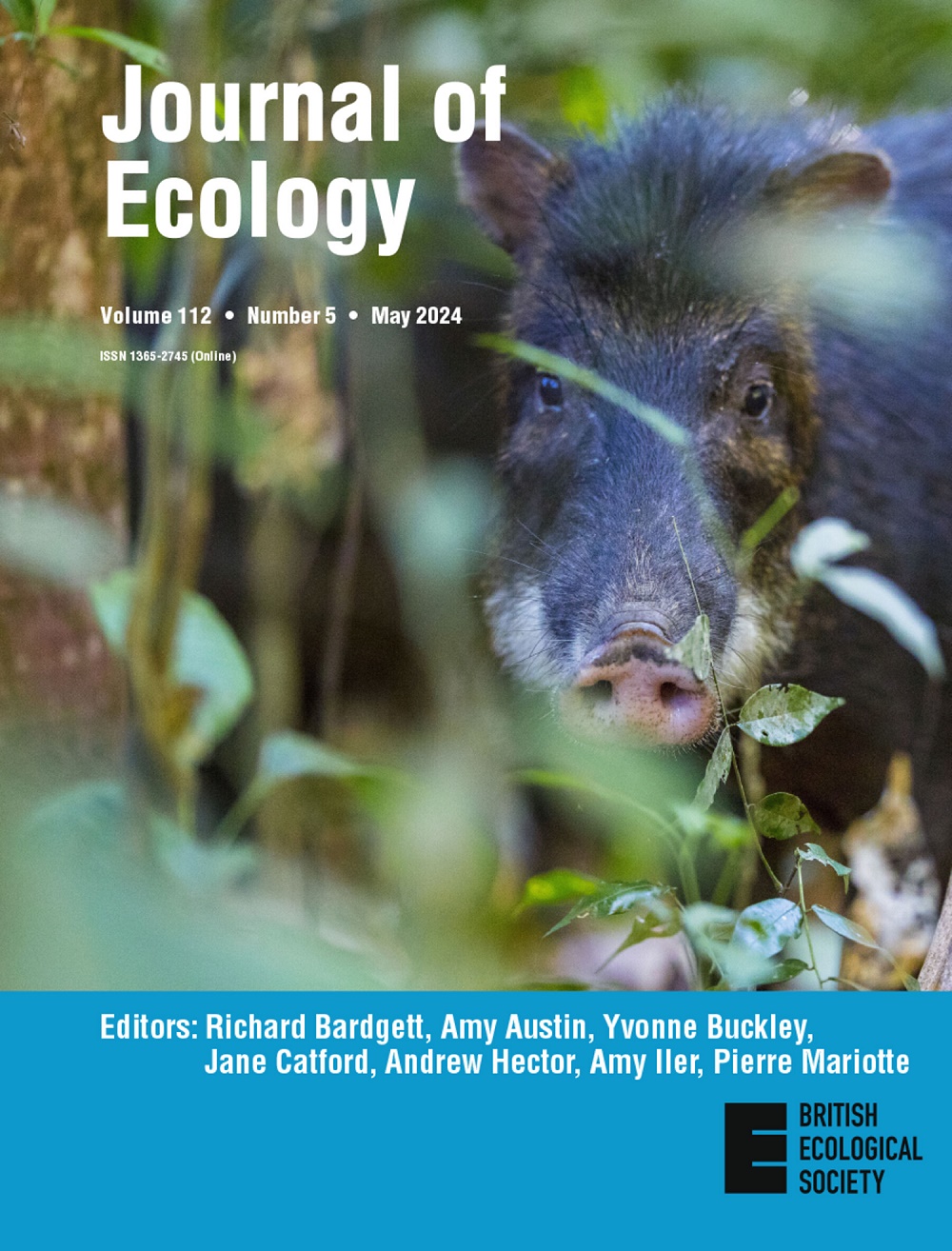Soil and litter legacy effects of pine invasion on subsequent reinvasion and secondary invasion
IF 5.6
1区 环境科学与生态学
Q1 ECOLOGY
引用次数: 0
Abstract




松木入侵对后续再入侵和次生入侵的土壤和凋落物遗产影响
外来入侵树木可以改变入侵生态系统的生物和非生物特性。即使在实施了密集的控制方案后,该地区仍可能容易受到同一物种的再次入侵或其他物种的二次入侵。决定再次入侵或次生入侵的一个关键因素是原生入侵者的土壤和凋落物遗留效应。外来针叶树是入侵者的一个突出案例,具有创造持久土壤和凋落物遗产影响的潜力。在新西兰,黑松(Pinus contorta)被认为是最具问题的入侵针叶树物种,对生物多样性、农业生产力和景观价值构成威胁。我们评估了受控制的松柏入侵的土壤和凋落物微生物群遗产是否能促进两种最丰富的商业种植外来针叶树物种(辐射松、门齐假杉)的同种再入侵和潜在的二次入侵。我们在无菌背景土壤中种植植物,接种来自未被入侵的草地和2年前除草剂控制的白杨林分的活土壤或无菌土壤和凋落物样品。我们的实验设计旨在将观察到的总体遗留效应分解为土壤和凋落物微生物组介导的影响,以及它们对初级入侵者和潜在次级入侵者幼苗建立和早期生长的潜在相互作用。结果表明,弯曲假单胞菌的入侵对其自身的影响总体为负遗留效应,而门氏假单胞菌和辐射假单胞菌的入侵对其自身的影响是中性的,甚至是积极的。这主要是由土壤微生物组的个体效应驱动的。反之,凋落物组成对幼苗形成有正向影响,而凋落物微生物组对幼苗形成有负向影响。因此,土壤和凋落物微生物组介导的成分可以相互作用,产生非加性效应。合成。本研究结果表明,在控制弯叶针叶树后,其他外来针叶树次生入侵的风险增加。土壤和凋落物效应对植物生长性能的复杂相互作用凸显了同时考虑遗产效应的多个维度及其可能的相互作用的重要性。关注这些相互作用可能有助于更好地理解再入侵和二次入侵过程,并为入侵后的管理实践提供信息。
本文章由计算机程序翻译,如有差异,请以英文原文为准。
求助全文
约1分钟内获得全文
求助全文
来源期刊

Journal of Ecology
环境科学-生态学
CiteScore
10.90
自引率
5.50%
发文量
207
审稿时长
3.0 months
期刊介绍:
Journal of Ecology publishes original research papers on all aspects of the ecology of plants (including algae), in both aquatic and terrestrial ecosystems. We do not publish papers concerned solely with cultivated plants and agricultural ecosystems. Studies of plant communities, populations or individual species are accepted, as well as studies of the interactions between plants and animals, fungi or bacteria, providing they focus on the ecology of the plants.
We aim to bring important work using any ecological approach (including molecular techniques) to a wide international audience and therefore only publish papers with strong and ecological messages that advance our understanding of ecological principles.
 求助内容:
求助内容: 应助结果提醒方式:
应助结果提醒方式:


